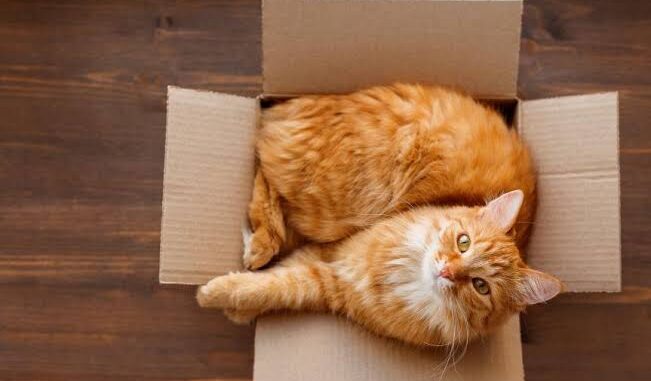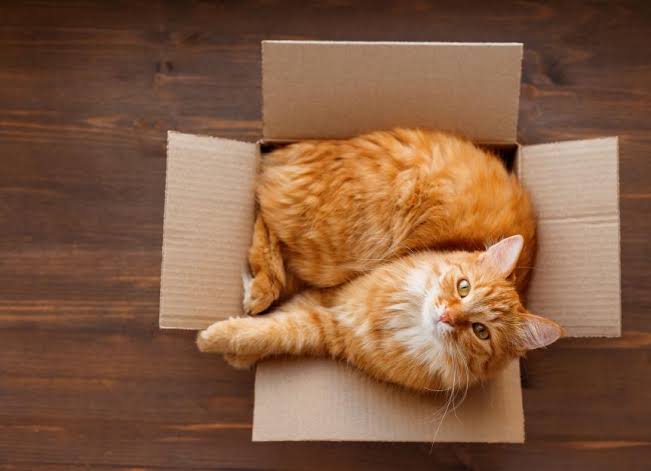
Why Your Cat Loves Boxes and How to Use Them: Cats are creatures of mystery, grace, and oddly enough obsessive box lovers. From expensive gift boxes to plain cardboard shipping crates, cats seem to be magnetically drawn to enclosed, box-shaped spaces. But why is that?

In this article, we’ll explore the science and behavior behind cats’ fascination with boxes, and how you can use boxes to enhance your cat’s wellbeing, reduce stress, and improve your home environment. We’ll also conclude with 6 practical uses for boxes in your cat’s life.
Why Cats Love Boxes: The Psychology Behind the Purr
1. Boxes Offer Safety and Security
In the wild, cats are both predators and prey. Even domestic cats retain this dual role in their behavior. Boxes provide a safe, enclosed space where they can watch without being seen—a perfect vantage point.
- Enclosed spaces make cats feel less vulnerable.
- They offer protection from all sides, which appeals to a cat’s instinct to hide from threats.
When stressed or overwhelmed (new environment, loud noises, strangers), a cat may seek out a box as a self-imposed “time-out zone.”
2. Boxes Reduce Stress
According to a 2014 study published in Applied Animal Behaviour Science, shelter cats provided with boxes adapted faster to their new environments and exhibited lower stress scores than those without. This shows a clear psychological benefit:
- Lower cortisol levels (stress hormone)
- More rapid social adjustment
- Improved appetite and grooming behavior
If your cat is anxious or recovering from illness, a simple cardboard box can offer significant psychological comfort.
3. Boxes Offer Warmth
Cats love warm spots—this is no secret. Cardboard is a natural insulator, trapping your cat’s body heat and creating a cozy environment. Enclosed spaces also reduce drafts and help your cat maintain a stable body temperature.
Fun fact: Cats tend to seek environments around 86–97°F (30–36°C), which is warmer than typical room temperatures. A closed-in box helps get closer to that ideal.
4. Boxes Satisfy Curiosity
Cats are naturally inquisitive. The sudden appearance of a new object—especially one with defined boundaries and hidden corners—triggers their exploratory instincts.
- They sniff it.
- Tap it with their paw.
- Jump in and test it out.
It’s not just play—it’s instinctual exploration, similar to checking out new dens or shelters in the wild.
5. They’re Great for Ambush Play
Ever been sneak-attacked by your cat from inside a box?
Boxes make the perfect ambush point. A cat can crouch in a box and wait for prey (or a toy) to wander by. Pouncing from cover is part of a cat’s hunting play repertoire.
How to Use Boxes to Enrich Your Cat’s Life
Understanding your cat’s love for boxes isn’t just a fun curiosity—it’s practical. You can use boxes to improve your cat’s behavior, reduce stress, and add enrichment to their daily routine.
Here are 6 ways to creatively and purposefully use boxes to benefit your feline friend.
1. Create a Hideaway for Stressful Times
Whether it’s a thunderstorm, guests, or a vet visit aftermath, boxes offer a perfect retreat.
What to Do:
- Place a medium-sized box in a quiet corner.
- Line it with a soft blanket or towel.
- Add a familiar scent, like your shirt or a used towel.
When to Use:
- During house parties or loud events
- After moving into a new home
- When introducing new pets
Benefits:
- Reduces anxiety
- Gives the cat a sense of control
- Encourages self-soothing behavior
2. Build a DIY Cat Castle or Maze
Multiple boxes can be transformed into playgrounds, tunnels, and towers.
How:
- Cut doorways between boxes and stack or arrange them.
- Secure with non-toxic tape or zip ties.
- Add holes in the top for jumping or pawing out.
Bonus Tip: Hide treats or toys inside for extra stimulation.
Why It Works:
- Encourages physical activity
- Stimulates mental engagement
- Great for indoor cats or those with limited space
3. Use Boxes to Encourage Restful Sleep
Place boxes in sunspots, near windows, or in quiet corners to encourage naps.
Key Features:
- Line with soft fleece or self-warming pads
- Choose boxes that are snug but not cramped
Why It Matters:
- Well-rested cats are less prone to behavioral issues
- Sleep is essential for immune health and recovery
L4. Assist with Behavioral Training or Introducing New Pets
Cats are territorial and cautious by nature. Boxes can help manage introductions or training transitions.
Examples:
- When introducing a new kitten, place boxes in shared areas to reduce tension.
- Use boxes to create “barriers” that allow sight and smell but limit direct interaction.
- During litter training or behavioral correction, use boxes as controlled zones.
Outcome:
- Easier transition into multi-pet households
- Less aggression and fear-based reactions
5. Improve Feeding Enrichment with Puzzle Boxes
Cats love working for their food—it taps into their hunting instinct.
DIY Puzzle Box Idea:
- Take a shallow box with a lid
- Cut various holes into the top and sides
- Place dry kibble or treats inside
- Let your cat paw and nudge to extract food
Benefits:
- Slows down fast eaters
- Prevents boredom-related behavior
- Supports healthy weight and digestion
6. Use Boxes to Improve Vet Travel Experiences
Traveling is stressful for most cats. You can help them associate containment with comfort by training them to use boxes.
How to Use:
- Place a box similar in shape and material to their carrier at home
- Encourage your cat to nap inside it with treats and praise
- Before travel, transition them into the carrier more comfortably
Result:
- Reduces fear and resistance during travel
- Makes vet visits smoother and less traumatic
READ ALSO: The Best Dog Foods for Allergies
Safety Tips When Using Boxes for Cats
- Avoid staples, tape, or sharp edges.
- Ensure the box is clean and free from chemicals or residue.
- Always supervise when giving boxes with cutouts or tape.
- Replace worn or chewed-up boxes to prevent ingestion of fibers.
FAQs
Why do cats prefer cardboard over plastic or fabric?
Cardboard offers texture, warmth, and familiarity. It absorbs scent quickly, which helps your cat claim it as their territory. It also scratches easily, providing both satisfaction and claw maintenance.
Are boxes safe for kittens?
Yes! Boxes are great for kittens, but avoid boxes with loose parts, staples, or tape. Make sure the box is not too small to prevent suffocation risk.
How often should I change out or replace a box?
Change boxes when they:
- Become dirty or soiled
- Are chewed or scratched excessively
- Start to smell
Some cats prefer older boxes with familiar smells, so you can rotate between “new” and “worn-in.”
My cat doesn’t seem interested in boxes—why?
Not all cats are the same. Your cat might prefer:
- Open beds instead of enclosed spaces
- Higher locations (try placing a box on a shelf or table)
- Different materials (try fabric-lined boxes or crates)
Try different shapes and sizes to see what your cat prefers.
Can I use boxes to help with multi-cat conflicts?
Yes. Boxes can serve as escape zones or neutral hiding spots in multi-cat households. Providing multiple boxes in various locations can reduce territorial tension and give each cat their own space.
Is it okay for my cat to chew or eat cardboard?
Mild chewing is normal. If your cat is eating cardboard, it may signal a behavioral issue like pica, a nutritional deficiency, or boredom. Monitor the behavior and consult your vet if it persists.
Leave a Reply
You must be logged in to post a comment.